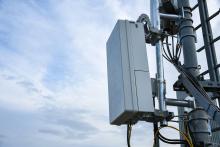Instead, Sullivan added, many corporations are looking at IP-centric networks where the introduction of UWB would broaden the architecture and usage. That's particularly true if its embedded into items like phones, printers and laptops.
Even if UWB exceeds enterprise expectations, neither Sullivan nor Aiello predicted it would replace 802.11. Instead, UWB will extend and enhance the 802.11 architecture in the enterprise, empowering applications such as streaming video and real-time collaboration.
"UWB applications are perfect for where density is high but mobility is low," Sullivan said. For example, users typically download files or view streaming video in their offices or meeting rooms. These areas would become what Sullivan described as "pockets of excellence," where UWB's WPAN capabilities offer higher throughput and quality of service.
"This capability isn't needed in, say, hallways," he added.
Dongles may be necessary at the start to ignite UWB, but industry watchers expect adoption followed by embedding to occur so much faster than what 802.11 experienced.








